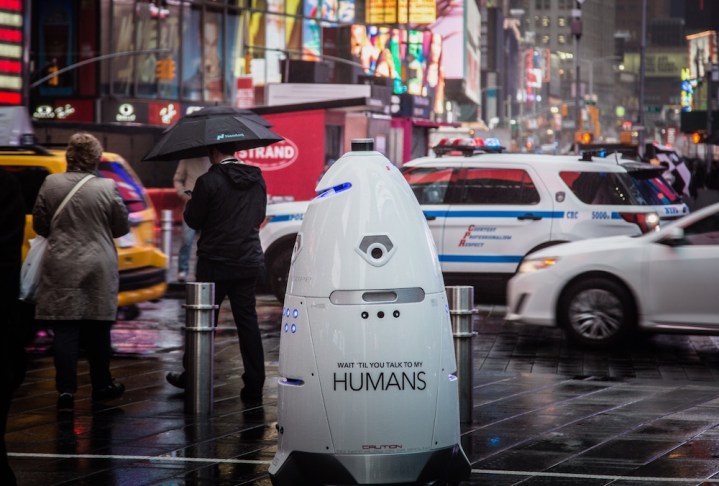New York City on Tuesday unveiled several crime-fighting robots designed to assist human police officers.
It’s actually the city’s second attempt at incorporating robocops into its police department after a public outcry cut short a similar effort two years ago.

This time, using asset forfeiture funds, the NYPD has spent $750,000 on two “Digidogs.” Built by Massachusetts-based Boston Dynamics, the quadruped robot — also known as Spot — is incredibly versatile and can operate autonomously or semi-autonomously.
The Digidogs can be deployed in situations deemed too dangerous for human officers to enter. In a bomb threat incident, for example, a camera-equipped Digidog would be able to get close to the scene and live stream images that could be helpful for forming a plan of action.
The NYPD will also test the 5-foot-tall, wheel-based K5 Autonomous Security Robot, which will patrol Times Square subway station starting this summer.
Built by California-based Knightscope, K5 looks a bit like R2-D2’s older sibling, or even a rocket fairing. It’s equipped with a 360-degree camera and multiple microphones to monitor its surroundings for signs of suspicious behavior.
The NYPD is spending $12,250 on the deployment of K5, which will work alongside a human officer. But don’t expect the robot to chase down fleeing suspects as it only has a top speed of 3 mph and can’t handle stairs.
None of the NYPD’s new robotic recruits will use facial recognition technology or carry any kind of weaponry, officials said.
“If we were not willing to move forward and use technology to properly keep cities safe, then we will not keep up with those who are doing harmful things to hurt New York,” Mayor Eric Adams said on Tuesday at a press conference unveiling the robots.
But not everyone is happy about the city’s decision to bring in police assistance in the form of robots. Communities United for Police Reform, for example, said: “We need to invest in housing, education, mental health care, and community programs that will keep us safe, not investment in new and expensive technologies to criminalize us further.”
Albert Fox Cahn, executive director of the Surveillance Technology Oversight Project, also has concerns about the deployment of robots, saying in a statement: “The NYPD is turning bad science fiction into terrible policing. New York deserves real safety, not a knockoff robocop.”
The big question now is whether New Yorkers will accept the robots’ presence this time around following their short-lived deployment in 2021.
Editors' Recommendations
- Texas airport to get a 420-pound security robot
- New York City orders all entertainment venues to close starting March 17
- Uber and Lyft face a cheaper ridesharing rival in New York City
- Electric Citi Bikes is returning to New York City with a price shake-up
- Hail a cab in New York City soon and you might step into a Tesla


